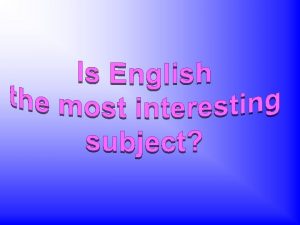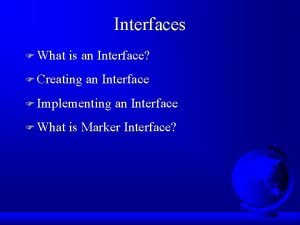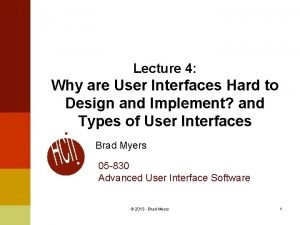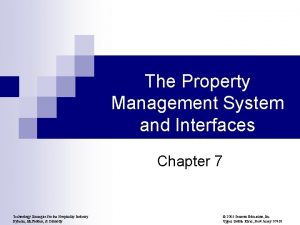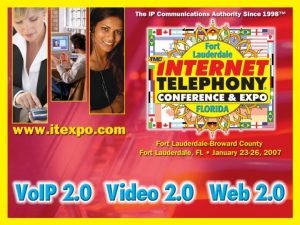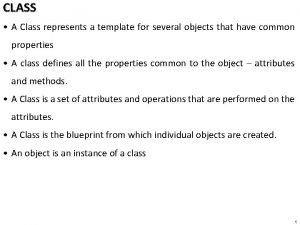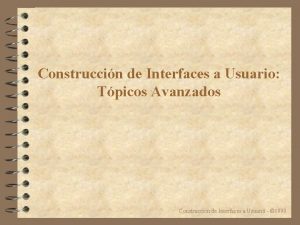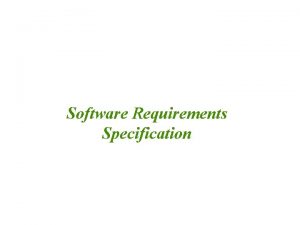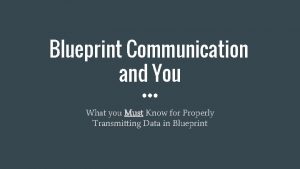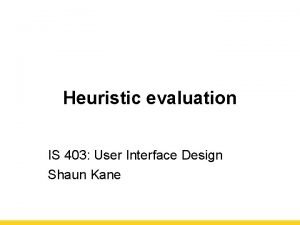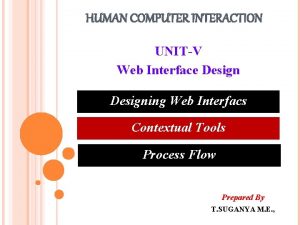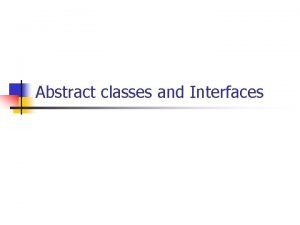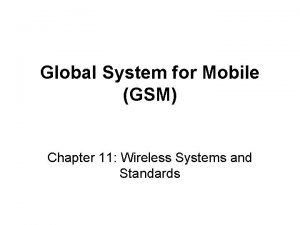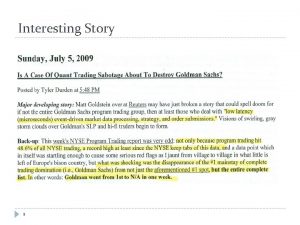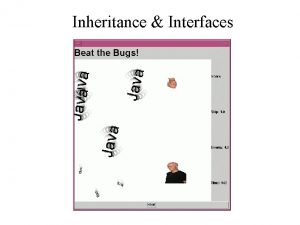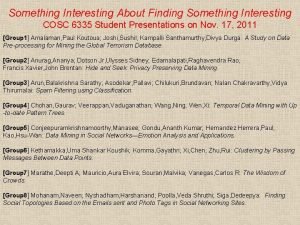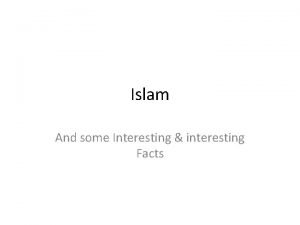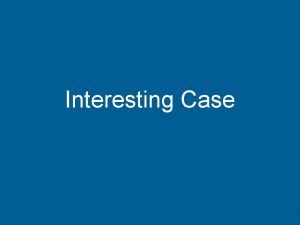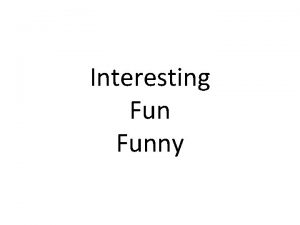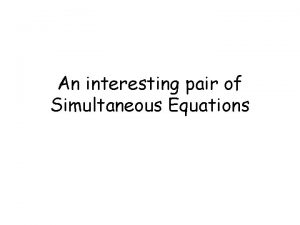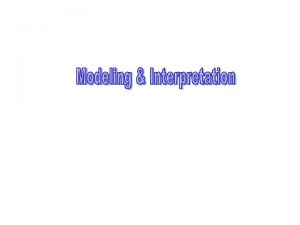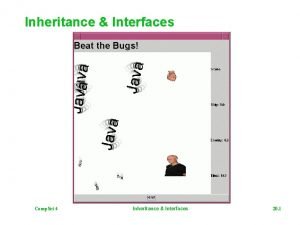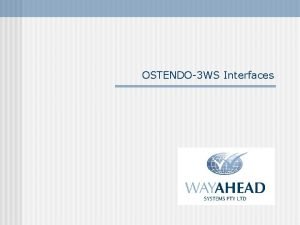Interesting Interfaces Interesting Interfaces Interesting Interfaces Where We















- Slides: 15


Interesting Interfaces

Interesting Interfaces

Interesting Interfaces

Where We Are At Where We Are Going Contextual Inquiry – Ethnographic Techniques to collect raw data You are here Work Models – Interpretation Sessions to create a shared understanding of the work and user’s mental models of the work Consolidation – Process of Induction to create a sense of the whole user population from the individual users Visioning – Brainstorming solutions User Environment Design – System Blueprint and Interface Specification Prototype – Application with sufficient detail for usability testing

Consolidation Process of Induction Individuals Whole User Population ü From facts we learn about individuals, we need to draw conclusions about the general population • Deduction vs. Induction ü What do the individuals say about common work structures, strategies, intent, issues, and problems.

The Affinity Diagram ü Organizes individual notes into a hierarchy of common issues ü IDEO Method Card ü How-To • In a group session each member has their field notes and a pad of post-its • One note is put-up and others look for similar notes that seem to go with it • Interview notes are placed together if they have an “affinity” – similar issues, intent, problems • Notes are given a group name that states the issue which binds them together

Affinity Diagram Example Time Management Track Class Assignments To Do Lists U 1 Entered class assignments into PDA U 2 Looked at calendar after each task to decide what to do next U 3 Wrote class assignments on pocket calendar U 3 Made a daily to do list every morning U 2 Wrote class assignments on hand transferred to calendar at end of day Printed a weekly to do list from PDA U 1

Affinity Diagram ü Built bottom-up ü Reveals scope of issues ü Group session drives consensus about the meaning of the data ü Use post-it’s

The Design War Room ü Walking the Wall ü Immersing yourself in the data Beyer & Holtzblat (1998), Contextual Design, Morgan Kaufmann, Page: 204

Consolidating Flow Models ü Pengungkapan pola komunikasi ü Terfokus pada aplikasi dengan mengenali jalur komunikasi untuk mendukungnya ü How-To • Dari alur model individu untuk mengenali peran § Mengumpulkan tanggungjawab organisasi untuk menyelesaikan tujuan • Nama peran dan listing penanggungjawab • Menggambar jalur komunikasi antar peran

Consolidating Sequence Models ü Pengungkapan activitas, tujuan, and strategi ü How-To • Indentifikasi aktifitas dan pembangkit triggers • Menuliskan langkah sebuah abstrak yang merupakan pusat dari yang dikerjakan • Membangkitan aktifitas sequence dan menuliskan langkah sebuah abstrak 175 • Kembali ke model konsolidasi sequences dan listing tujuan dari setiap langkah atau sequences 174 Beyer & Holtzblat (1998), Contextual Design, Morgan Kaufmann, Pages: 173, 174

A Consolidated Sequence Model General Activity Label Goal of Activities Abstract Step Beyer & Holtzblat (1998), Contextual Design, Morgan Kaufmann, Page: 177

Consolidating the Artifact Model ü Mengungkapkan tema organisasi dan konsep yang menggunakan pola kerja mereka ü How-To • kelompok artifacts dari tipe yang sama • Identifikasi bagian / parts • menggambar structure, penggunaan dan , tujuan • Mencatat variasi temuan / perbedaan

A Consolidated Artifact Model Common Structure Common Intent but variation of structure and usage Beyer & Holtzblat (1998), Contextual Design, Morgan Kaufmann, Page: 183
 Interesting more interesting the most interesting
Interesting more interesting the most interesting Interface f
Interface f Why are user interfaces hard to implement
Why are user interfaces hard to implement Property management system interfaces
Property management system interfaces Ims architecture with interfaces
Ims architecture with interfaces Difference between abstract classes and interfaces
Difference between abstract classes and interfaces Interfaces inteligentes
Interfaces inteligentes Characteristics of bad srs document
Characteristics of bad srs document Blueprint interfaces
Blueprint interfaces Characteristics of graphical user interface
Characteristics of graphical user interface Gulf of execution and evaluation
Gulf of execution and evaluation Which are not purely surface phenomena
Which are not purely surface phenomena Contextual tools
Contextual tools Difference between interface and abstract class
Difference between interface and abstract class Abstract classes in java
Abstract classes in java Gsm tch
Gsm tch
